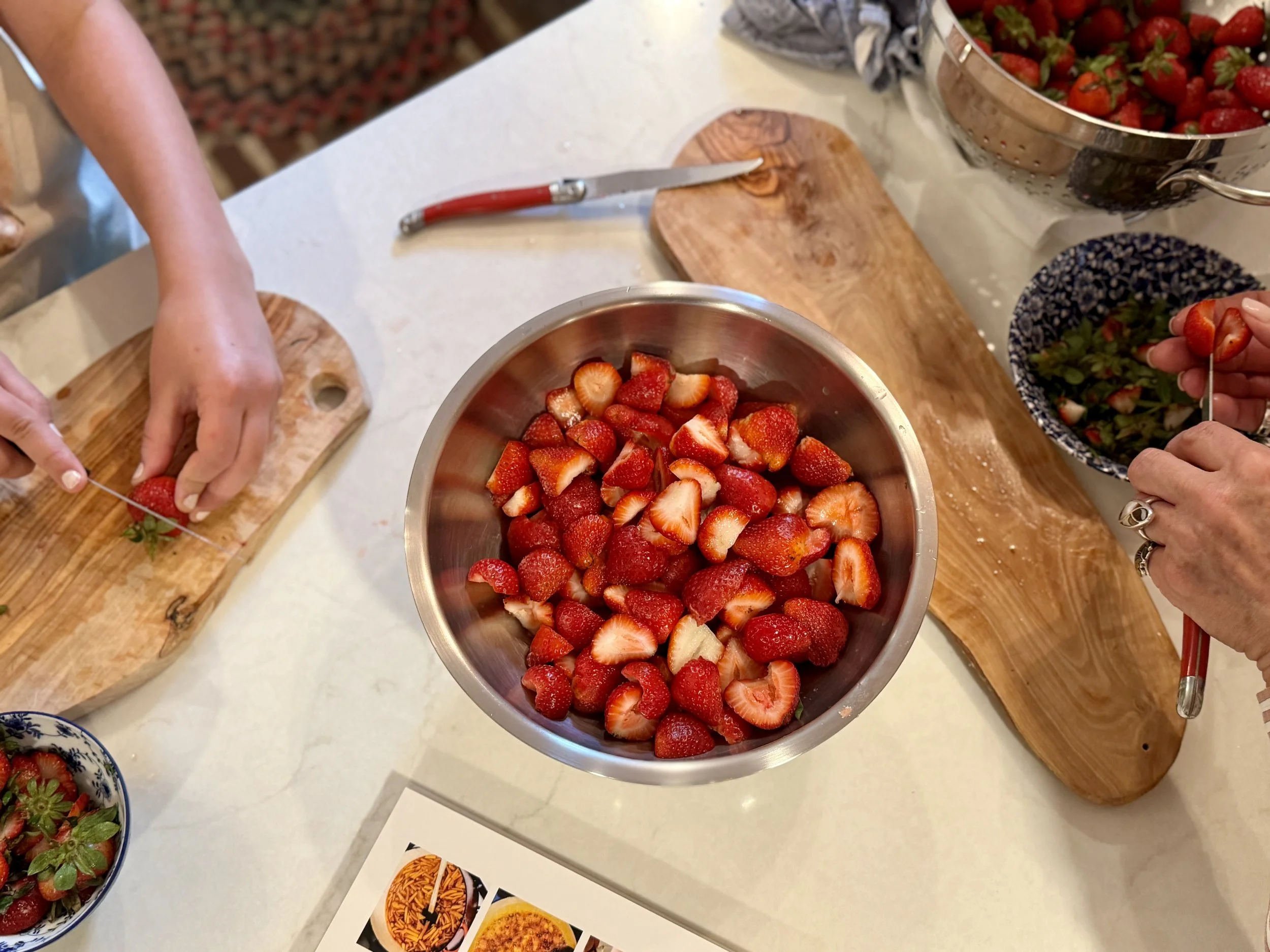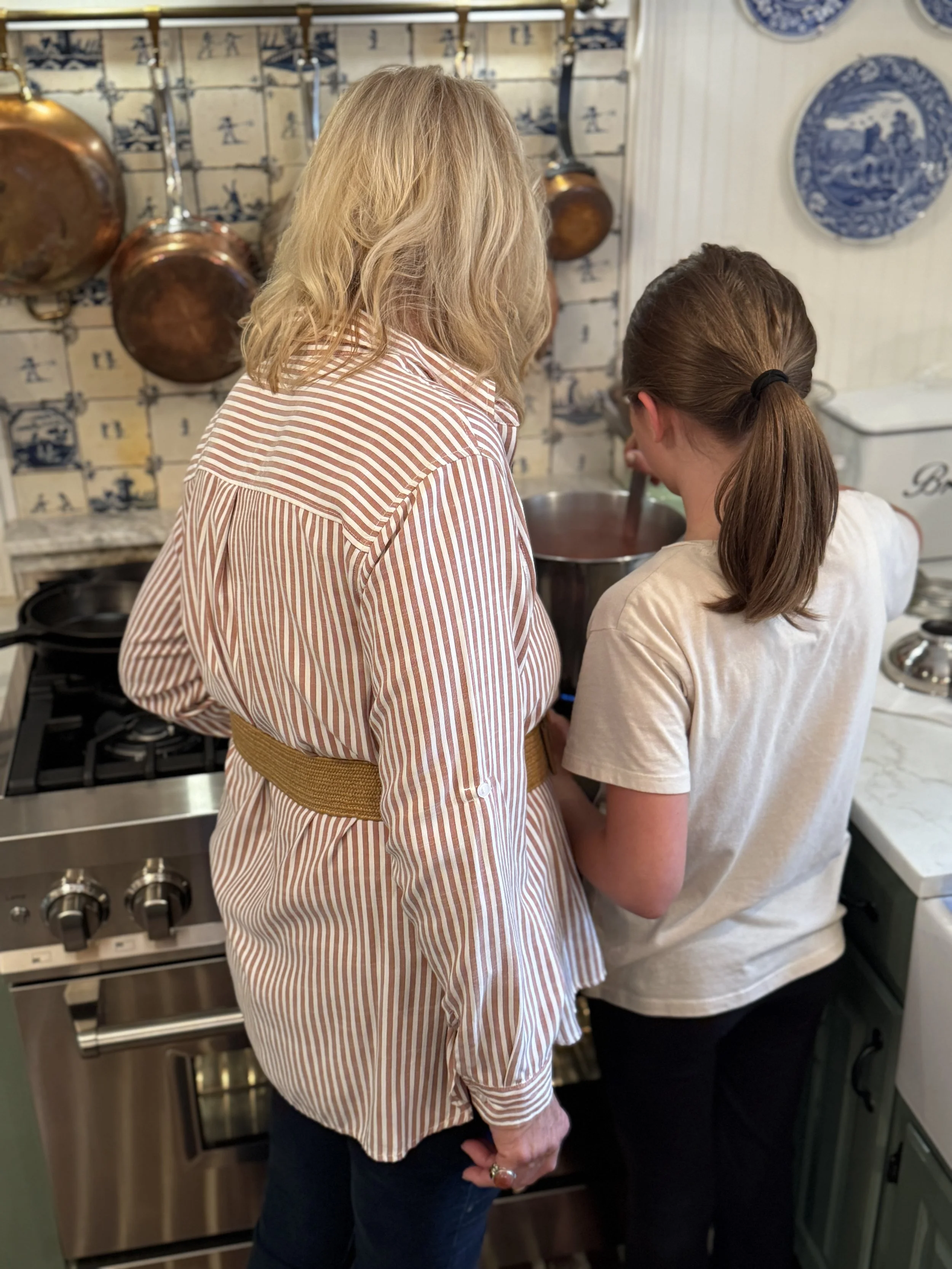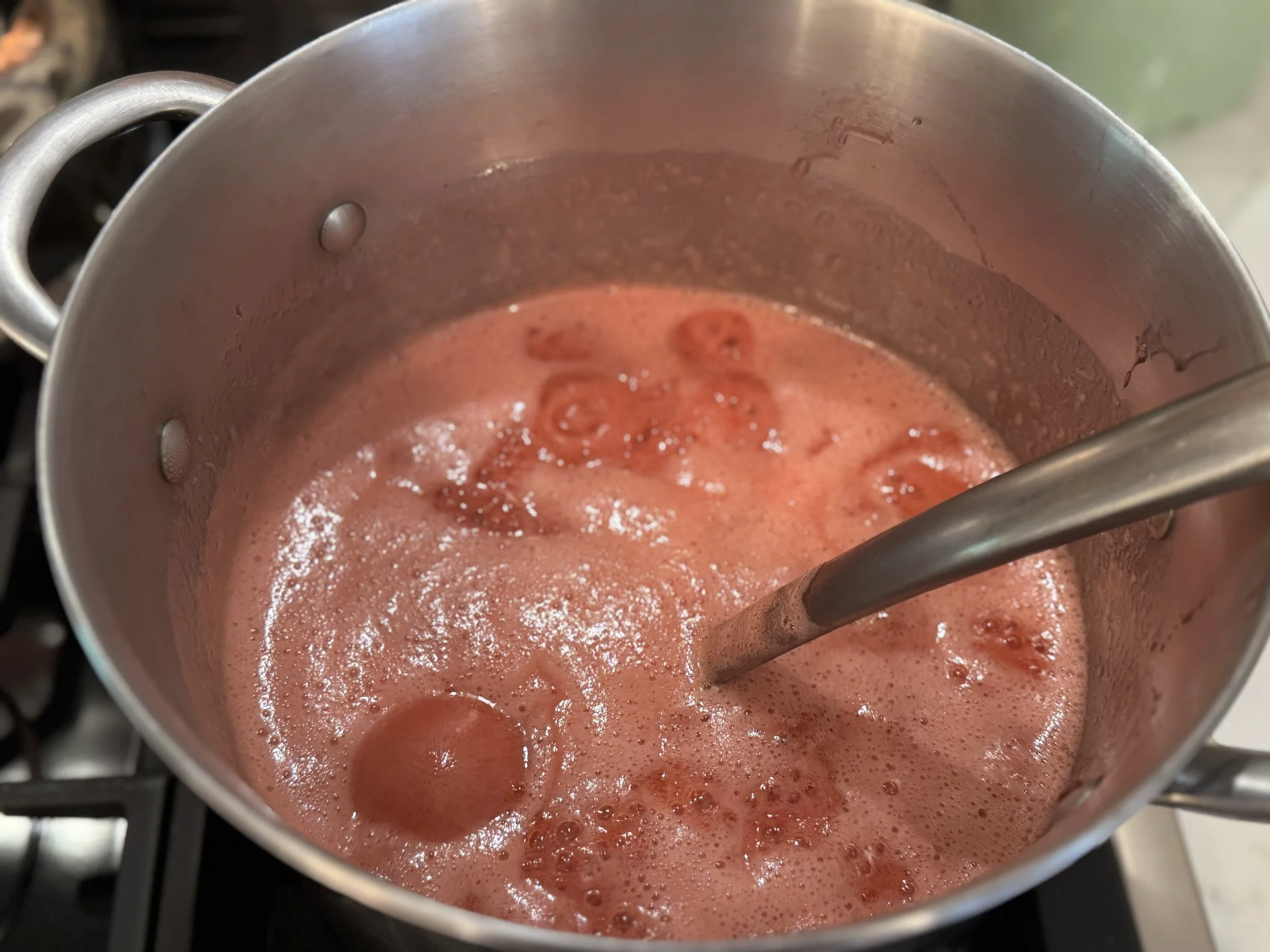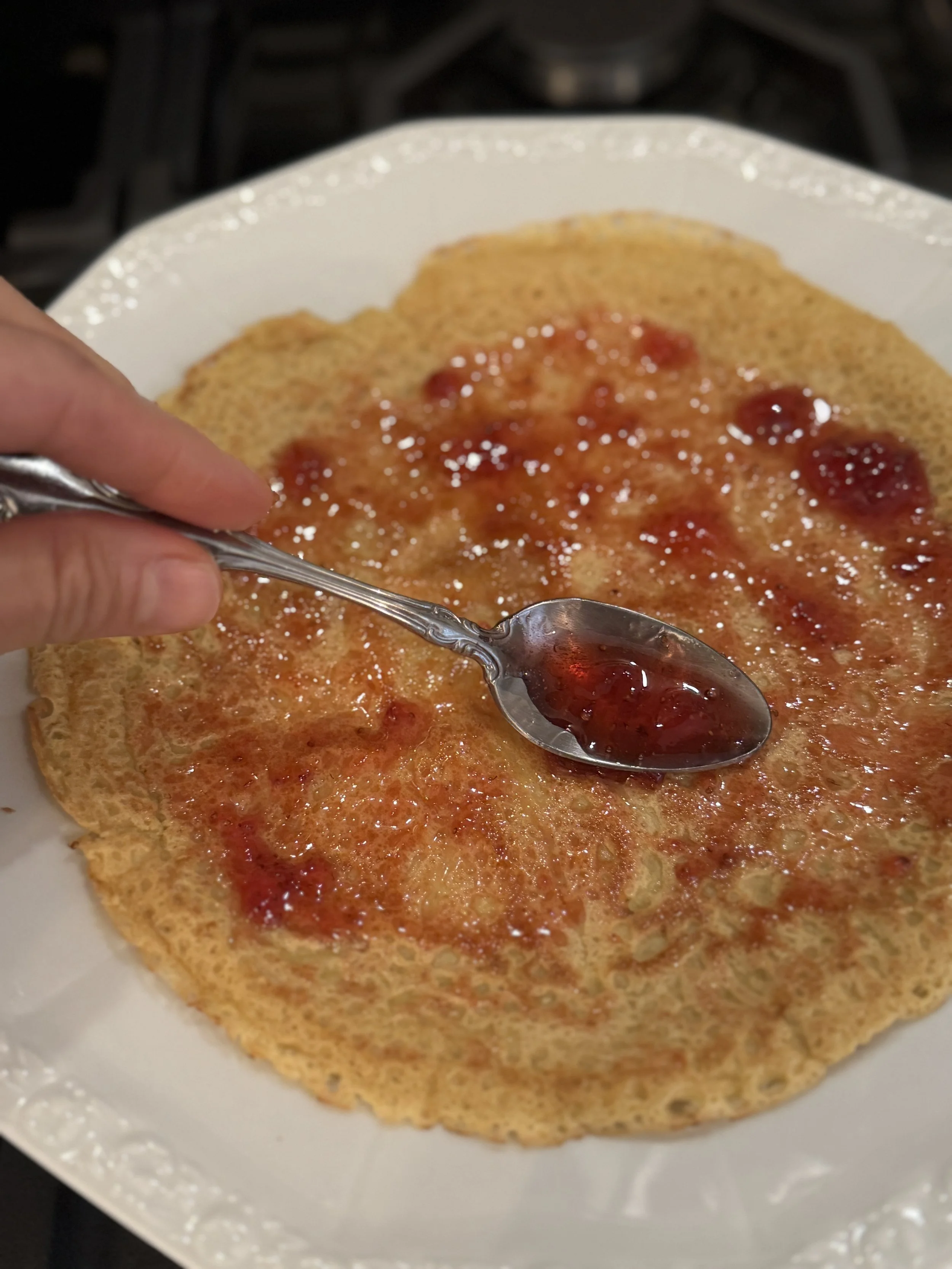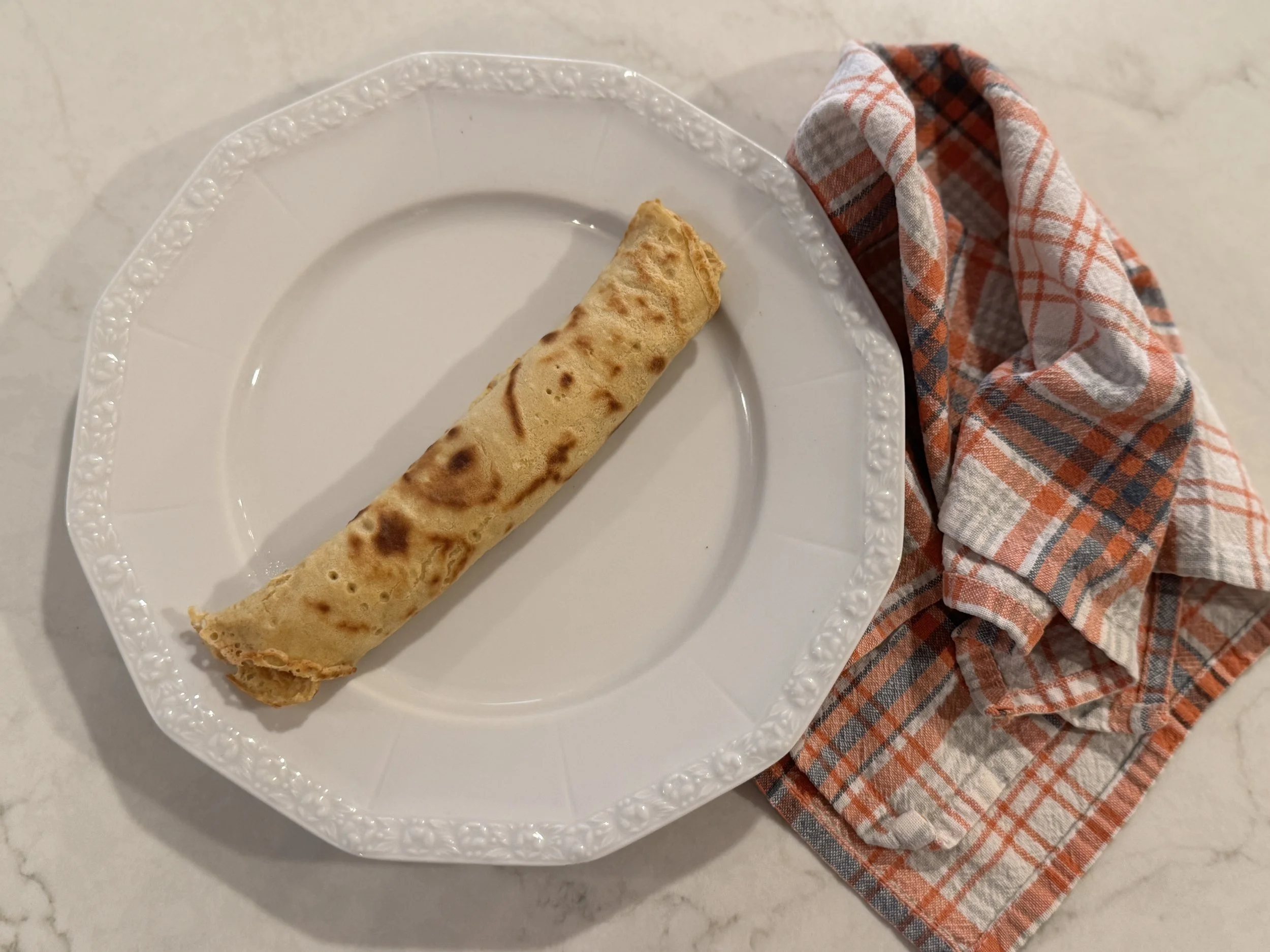May is for Making Jam
One of the most beautiful months of all the year where I live is May. The flowers are in full bloom and everywhere you go—smells of boxwood, honeysuckle, and magnolia blossoms permeate the air.
May is also the month when the strawberries come tumbling in—burgeoning like red candies from fruitful runners after the long, cold months of winter. It has become a bit of a tradition now to make strawberry jam each May—that is, if you can call doing something consecutively for a few years a ‘tradition.’ I’m going to. If I consider this my ‘tradition’—the vintage art of preserving fruit that is, then it will keep me accountable next May to carry on doing the same thing. That’s how traditions work, don’t they. We think to ourselves—”Well, I did it last year. Perhaps I should do it again this year.”
And on and on it goes.
This May, we found a lovely source of locally grown strawberries—different from last year, but equally as delicious. The berries were incredibly sweet—yet firm. The perfect time to preserve them. We had a gallon on our hands and a slow, deliberate afternoon to enjoy. This was a family affair—as 3 generations of women gathered in the kitchen slicing, measuring, stirring, pouring—preserving together the taste of May for the days ahead.
When it comes to the ‘nuts and bolts’ of jam-making, I realize I prefer any and every British jam recipe there is. Not just because I’m admittedly an Anglophile, but mainly because their recipes are so low-fuss and flavorful. Not a single one of them I’ve found which uses high-acid fruits + sugar requires a water bath to can jam. And for that—I’m sold.
Last year, I bought a fabulous book by Camilla Wynne called Jam Bake. It’s downright the best book on jam I’ve ever read. Her approach is logical, scientific, and the book itself is full of beautiful recipes centered around—you guessed it, jam. This book is for you if you are like me and want a highly-educated source explaining the science behind jam-making. When preserving, it’s always been important for me to know 3 things:
1.) how to not get sick making jam
2.) how to not get other people sick making jam and…
3.) why the methods work scientifically to keep the bad microbes away
When it comes to canning, I need to know that I know that I know—you know?
Camilla goes into detail as to why water bath canning is not necessary for high-acid, high sugar jams. Her book will put all of your concerns to rest, as she explains in detail the science behind why things like botulism can’t survive in the highly-acidic environments of something like a strawberry jam. Obviously, for low acid foods—one needs to pressure can in order to keep scary microbes at bay, but that’s not at all what we’re talking about with jam-making. In fact, jam-making is a whole different beast entirely. The good news is—it’s a sweet, highly-acidic beast that isn’t botulism-friendly when done correctly.
With those concerns out of the way, and Camilla’s expertise undergirding our efforts—we carried on jamming. Tea in hand—stirring frequently, and sneaking sweet spoonfuls here and there.
I landed on Le Parfait’s strawberry jam recipe—as they have such a user-friendly website and cute videos to go along with each recipe. Most, if not all strawberry jam recipes that I could find use a 1:1 ratio of fruit to sugar. Yes, this is a lot. But no one ever said jam was healthy. On the contrary—it’s a decadent treat to be enjoyed sparingly and a downright lovely way to bottle up the abundance of the season. I don’t eat jam on toast or jam on crêpes because it’s healthy—I eat it because life is short, God is good, and decadent treats like jam are made to be enjoyed in moderation.
Thankfully, all 12 of our jams sealed beautifully—even without a water bath. As one does, we opened one right away to eat on homemade crêpes. I think it’s criminal not to have crêpes if you have homemade jam. Just criminal.
So—May around here is now for making strawberry jam. A few years in, and the tradition has officially become an expected staple. And it’s certainly one that I hope will continue for years to come.
If you’d like to see the process of jam making without a water bath, I’ve made a video below. Please enjoy!

